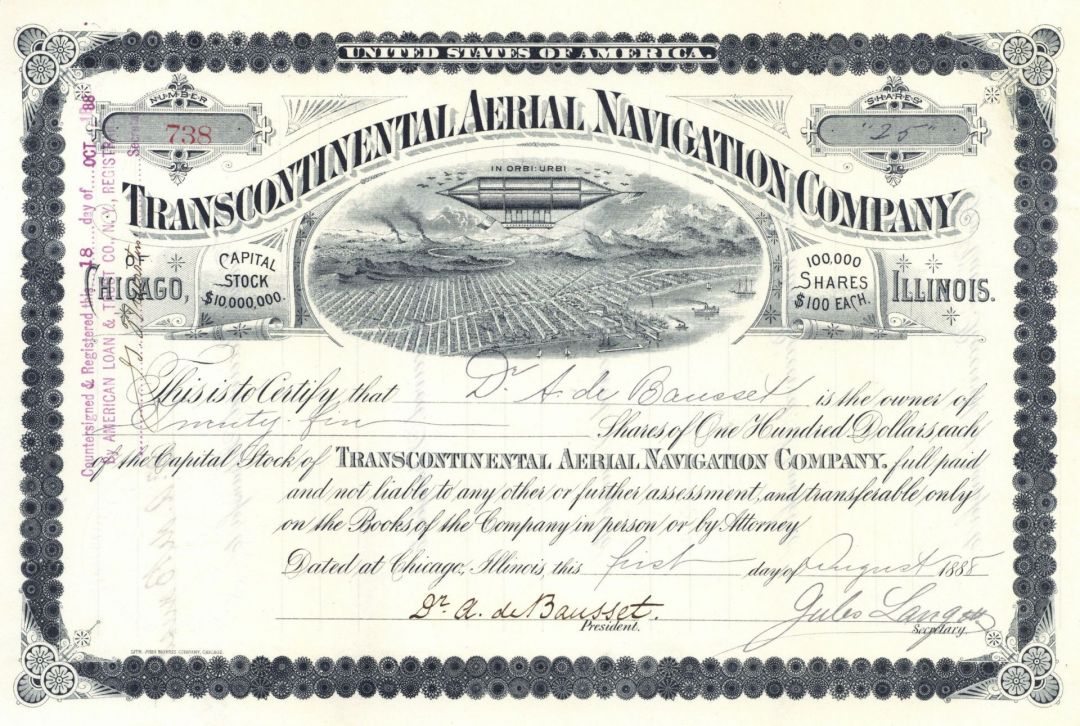Transcontinental Aerial Navigation Co. - 1888 dated Aviation Stock Certificate - Incredible Vignette
Inv# VS1068 StockStock. A vacuum airship, also known as a vacuum balloon, is a hypothetical airship that is evacuated rather than filled with a lighter-than-air gas such as hydrogen or helium. First proposed by Italian Jesuit priest Francesco Lana de Terzi in 1670, the vacuum balloon would be the ultimate expression of lifting power per volume displaced. (Also called "FLanar", for F.Lana and Portuguese for wandering)
From 1886 to 1900 Arthur De Bausset attempted in vain to raise funds to construct his "vacuum-tube" airship design, but despite early support in the United States Congress, the general public was skeptical. Illinois historian Howard Scamehorn reported that Octave Chanute and Albert Francis Zahm "publicly denounced and mathematically proved the fallacy of the vacuum principle", however the author does not give his source. De Bausset published a book on his design and offered $150,000 stock in the Transcontinental Aerial Navigation Company of Chicago. His patent application was eventually denied on the basis that it was "wholly theoretical, everything being based upon calculation and nothing upon trial or demonstration."
In 1921, Lavanda Armstrong discloses a composite wall structure with a vacuum chamber "surrounded by a second envelop constructed so as to hold air under pressure, the walls of the envelope being spaced from one another and tied together", including a honeycomb-like cellular structure. In 1983, David Noel discussed the use of geodesic sphere covered with plastic film and "a double balloon containing pressurized air between the skins, and a vacuum in the centre". In 1982–1985 Emmanuel Bliamptis elaborated on energy sources and use of "inflatable strut rings". Read more at https://en.wikipedia.org/wiki/Vacuum_airship
A stock certificate is issued by businesses, usually companies. A stock is part of the permanent finance of a business. Normally, they are never repaid, and the investor can recover his/her money only by selling to another investor. Most stocks, or also called shares, earn dividends, at the business's discretion, depending on how well it has traded. A stockholder or shareholder is a part-owner of the business that issued the stock certificates.











Ebay ID: labarre_galleries